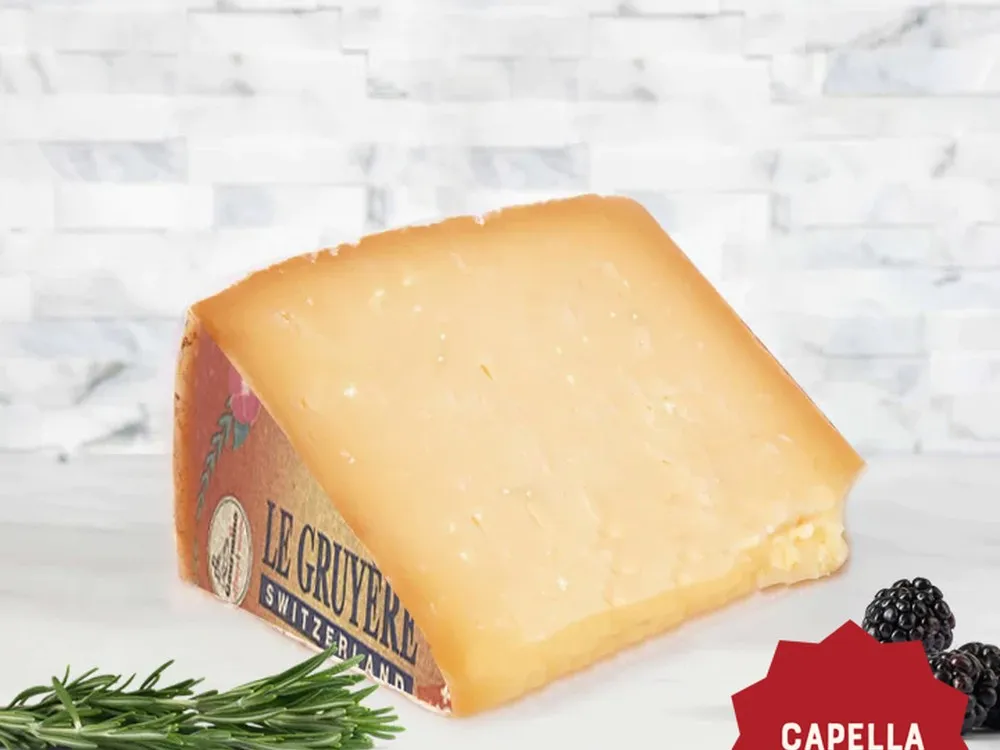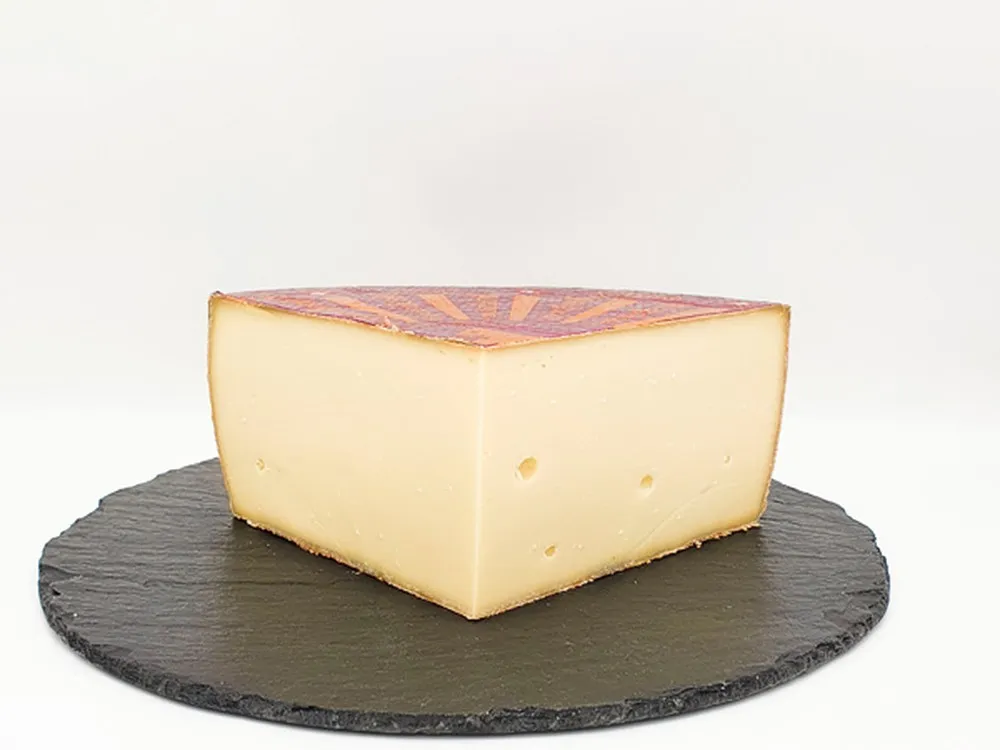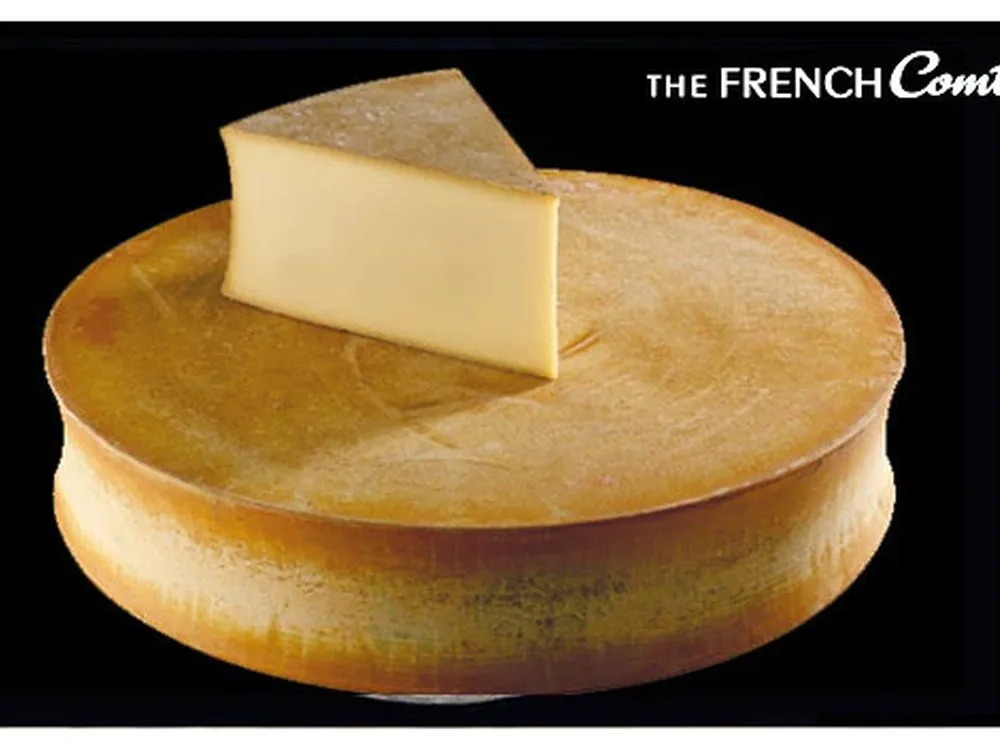Gruyere
What is Gruyere Cheese? And Best Gruyere Substitutes
Gruyere cheese is a popular and versatile semi-hard cheese from Switzerland (cantons of Fribourg, Vaud, Neuchâtel, Jura, and Berne), and is named after the town of Gruyère, in Fribourg.
Gruyère AOP is made from raw cow's milk, and aged for 3 to 10 months. Cherished for its creamy texture and nutty flavor, it’s known for its culinary excellence, as Gruyère is ideal for baking. Due to its melting properties, it is commonly used in fondues and French onion soup. It is also often grated over salads and pasta. The cheese pairs well with white wines like Riesling.
The term "gruyere" can label cheeses outside the Gruyère regions of Switzerland and France. This applies globally, including the US, Netherlands, Germany, and Austria, though the FDA mandates "small holes" and a minimum 90-day aging period for cheeses labeled as "Gruyere".
While recognized as a Swiss Geographical Indication, French Gruyère holds PGI status in the EU. To avoid confusion, it's sold as "French Gruyère" and features holes ranging from pea to cherry size.
The cheese gained AOC status in 2013. While recognized as a Swiss Geographical Indication, French Gruyère holds PGI status in the EU. To avoid confusion, it's sold as "French Gruyère" and features holes ranging from pea to cherry size.
What Kind of Cheese Is Gruyere?
Gruyere is a cow's milk cheese made from the unpasteurized milk of cattle that graze on the lush pastures of the Gruyere region in Switzerland. The cheese is aged anywhere from 5 to 12 months, during which time it develops its distinctive flavor and texture. Gruyere is known for its firm interior, which becomes more supple and slightly crumbly with age.
Its taste evolves from sweet and slightly salty when young to more assertive, earthy, and complex as it matures; as it ages, small cracks and irregularly shaped "eyes" (holes) also form.
One key factor contributing to Gruyere cheese's unique flavor is its traditional production method, which has been passed down through generations. This distinctive cheese-making process involves skilled artisans who carefully craft each wheel of cheese with precision and expertise. The aging process occurs in special caves or cellars, where the cheese is carefully monitored and turned regularly to ensure even maturation.
When it comes to culinary uses, Gruyere cheese is a versatile ingredient that is often enjoyed in various ways. Its flavor profile laced with hazelnut and sweetness makes it a popular choice for melting in fondue or gratins. Gruyere also pairs well with fruits such as apples and pears and cured meats like prosciutto. Whether grated over pasta or enjoyed on a platter, Gruyere is a beloved cheese that adds depth and richness to any dish.
Where Is Gruyere Cheese From?
Gruyere originates from the Swiss cantons of Fribourg, Vaud, Neuchâtel, Jura, and Berne and takes its name from Gruyère in Fribourg. This region –located in the western part of the country – is famous for its picturesque landscapes and rich dairy heritage. Gruyere is deeply ingrained in Swiss cuisine and has a long-standing tradition dating back to the 12th century. It is protected by the Swiss AOC (Appellation d'Origine Contrôlée) label, which ensures that only cheese made within the region that complies with strict guidelines can bear the name Gruyere.
The minimum five-month maturation period produces a firm and flavorful cheese; this flavor intensifies in cheeses selected for even more extended aging periods.
The cheese’s cow's milk origin gives it a pale yellow color and a slightly grainy texture that complements its complex flavor profile regardless of how long it is aged.
Visitors to the Gruyere region can explore traditional cheese-making farms and witness the artisanal process of Gruyere cheese production that has been passed down through generations. The cheese-making process involves skilled artisans who carefully craft each wheel of cheese with precision and expertise. Additionally, the aging process takes place in special caves or cellars where the cheese is carefully monitored and turned regularly to ensure even maturation. Such visits highlight how the region's rolling hills and lush pastures provide the perfect environment for dairy cows to graze and produce the kind of high-quality milk essential for crafting world-class cheese. Naturally, local restaurants and markets capitalize on the cheese’s fame and offer a wide selection of Gruyere cheese, allowing visitors to indulge in the authentic flavors of this Swiss culinary treasure.
Is Gruyere a Swiss Cheese?
Yes, Gruyere is possibly the most renowned Swiss cheese and is often referred to as the "king of cheeses" in Switzerland.
Gruyere exemplifies the craftsmanship and expertise of Swiss cheesemakers, and its distinct flavor has made it a local and international staple. However, it is important to note that not all Swiss cheeses are Gruyere cheese. Switzerland boasts a variety of other delicious cheeses such as Emmental, Appenzeller, and Raclette.
Gruyere Cheese Pronunciation
Gruyere is pronounced as "groo-yair" or “groo-yehr” (ɡruːˈjɛər/). The "u" is articulated like the "oo" in "food," and the emphasis is placed on the second syllable. The correct pronunciation of Gruyere can be tricky but is worth mastering as such knowledge will impress your fellow cheese lovers and enhance your overall culinary knowledge.
What Does Gruyere Cheese Taste Like?
Gruyere cheese boasts a complex flavor profile that combines nuttiness with a hint of fruit and subtle yet noticeable sweetness. It also possesses a rich and creamy texture that melts beautifully when heated, making it a perfect choice for fondues and gratins. Age, however, significantly impacts its overall flavor profile. Younger Gruyere tends to be milder and sweeter, while aged Gruyere develops a more robust and nutty flavor. Its distinctiveness sets it apart from other Swiss cheeses and makes it a favorite among cheese connoisseurs.
What to Do With Gruyere Cheese?
Gruyere cheese's versatility makes it an excellent addition to various dishes. Its remarkable melting capabilities make it perfect for grilled cheese sandwiches and cheesy pasta dishes such as macaroni and cheese. It can also elevate classic dishes like quiches, gratins, and potato au gratin. Additionally, Gruyere cheese pairs wonderfully with fruits, bread, and even chocolate. The possibilities are endless, so let your creativity run wild when incorporating Gruyere into your culinary repertoire.
All The Best Substitutes and Alternatives for Gruyere Cheese
While Gruyere cheese undoubtedly adds a unique flavor and texture to dishes, several alternatives can be used in its absence. Here are some of the best substitutes for Gruyere cheese:
- Swiss Cheese: As a close cousin to Gruyere, Swiss cheese shares similar flavor notes and melting capabilities. It can be an excellent substitute for dishes like quiches or sandwiches.
- Emmental Cheese: Like Gruyere, Emmental is a Swiss cheese known for its nutty taste and meltable nature. It can be used interchangeably in recipes that call for Gruyere.
- Appenzeller Cheese: Another Swiss cheese with a distinctive flavor, Appenzeller, can be a suitable substitute for Gruyere in recipes that require melting or baking.
- Comté Cheese: This French cheese closely resembles Gruyere and offers a similar flavor profile. It can be a great substitute in dishes like soups, casseroles, and gratins.
Now that you're armed with knowledge about Gruyere cheese and its substitutes, you can confidently explore the world of Swiss cheese and discover new culinary delights. Whether you're using Gruyere itself or one of its alternatives, these cheeses are sure to elevate your dishes and satisfy your cheese cravings. Enjoy the journey of experimenting with different flavors and textures, and savor the delectable results!

Over 200,000 page views per month, Put your store on our map!
Contact UsGruyere cheese is a famous Swiss cheese known for its nutty and slightly sweet flavor. Luckily, several kinds of cheese can serve as excellent substitutes for Gruyere when you don't have it or simply want to explore different flavors.
Below are just some of the options available to you.
Is …
Read MoreGruyere Q & A
-
Is Gruyere Lactose-Free?
Gruyere cheese is not entirely lactose-free but contains significantly less lactose than many other dairy products. During the cheesemaking …
Read More -
Is Gruyere Vegetarian?
Gruyere cheese is typically considered vegetarian-friendly, as it is made from cow's milk and contains no animal rennet.
Animal …
Read More -
Is Gruyere Cheese Gluten-Free?
If you're following a gluten-free diet, you'll be glad to know that Gruyere cheese is naturally gluten-free. The cheese …
Read More -
Does Gruyere Cheese Melt?
Gruyere cheese is renowned for its exceptional melting properties, making it a favorite among cheese lovers and chefs alike. …
Read More -
How To Store Gruyere Cheese
Proper storage plays a crucial role in preserving the quality and taste of Gruyere cheese. To keep your cheese …
Read More -
How Long Can Gruyere Cheese Sit Out?
Gruyere cheese is a perishable food that requires proper handling to maintain quality and prevent foodborne illnesses. The cheese …
Read More -
Can You Freeze Gruyere Cheese?
Freezing cheese is a common practice for extending its shelf life, but Gruyere cheese may not freeze as well …
Read More -
Can Dogs Eat Gruyere Cheese?
While dogs can technically eat Gruyere cheese, it should be given sparingly and in small quantities.
Like cats, …
Read More -
Can Cats Eat Gruyere Cheese?
While cats are known for their curiosity about human foods, you must be cautious about what you offer them. …
Read More -
Can You Eat Gruyere Cheese While Pregnant?
When it comes to pregnancy, it's always important to pay attention to what you consume. Gruyere cheese is generally …
Read More






